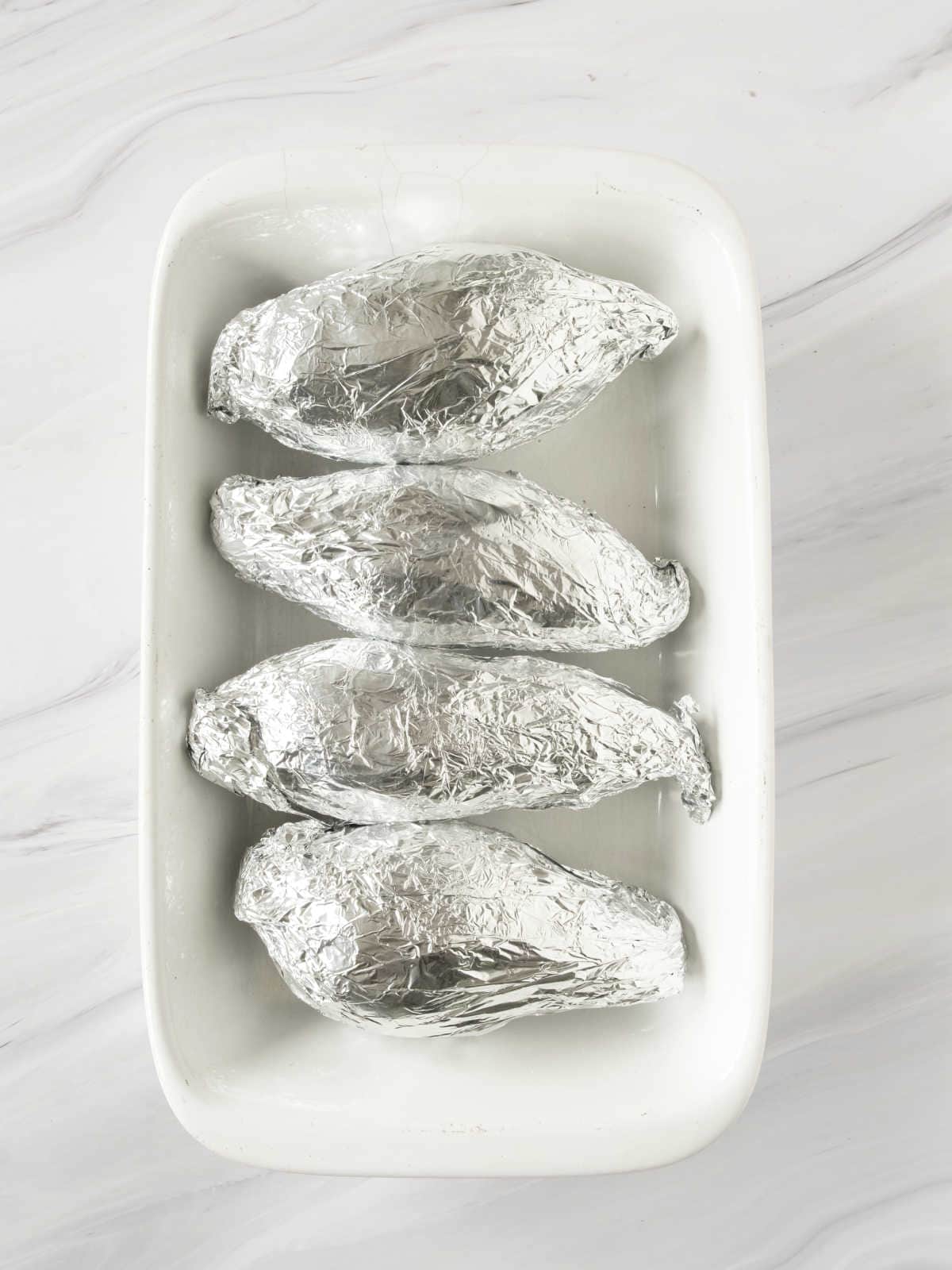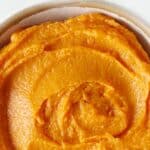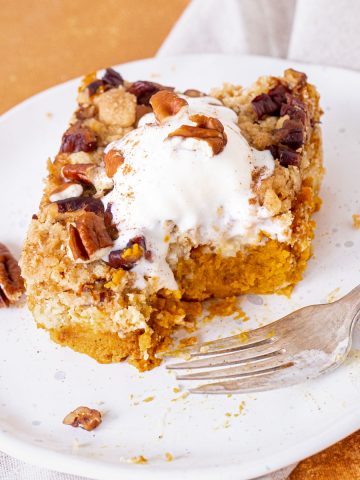Making homemade sweet potato purée works is easy and there's little hands-on work involved. It keeps refrigerated for several days and can be frozen. Eat it as a savory side dish and for baking recipes, just like you would canned puree.

For those who want to use a more natural and fresh sweet potato puree when baking or have difficulty finding it canned (depending on where you live, it might not be easily available), here is how you can make it at home from scratch.
It takes only 1 ingredient and 3 easy steps: bake, process, and drain.
This creamy puree is what you need for sweet potato pie, Thanksgiving sweet potato casserole, cookies, cakes and other sweet recipes that call for mashed sweet potatoes.
So many sweet and savory recipes call for this puree, from pies to baby food to casseroles. Season it (as you would mashed potatoes) and serve it as a side dish with roasted turkey or pork sirloin. Most recipes that call for pumpkin puree can be made with sweet potatoes.
How to cook the sweet potatoes
Oven baked
Although there are several ways to cook them, I strongly recommend baking. The flavor is more concentrated, they retain the least moisture, and there's practically no hands-on work on your part.
I use aluminum foil to wrap the potatoes because it's easier to clean afterward as the juices stay in the paper and not in the pan. You can also cover the whole pan with foil instead of individually wrapping them. Both work.

Take the whole sweet potatoes and roast them until super soft and a knife easily pierces them. It should be very soft inside. The time varies depending on the size and type, but my experience is at least 45 minutes.

When cooled enough to handle, cut in half and scoop out the pulp with a spoon.
Steaming or boiling
- You can steam peeled sweet potato pieces until soft and mash or process them. No salt or any other ingredient. This is handy when buying already-cut potato pieces. It takes longer to drain as they have more liquid. I use a steamer or a 2-piece pasta cooking pot, one that has a steamer incorporated, with an inch of water in the bottom.
- You can boil sweet potato cubes without salt and mash them. They retain too much water, and, even after you drain it, they will have lost some flavor.
Processing
This is a highly recommended step if you want a smooth, homemade puree. It might sound like an extra one, but the result is way better. And it's more a waiting game than a hands-on process.
- Food processor: good choice when you have a large amount of pulp. Use the steel blade and process away until you have a smooth consistency, scraping the sides and the bottom once or twice.
- Blender and immersion blender: they work just as well and are great for smaller amounts or because you don't want to wash the processor. Use a deep bowl or jar.

Draining
- Depending on how watery the sweet potatoes are, it's advised to let the puree drain until it thickens and is similar in texture to the canned stuff.
- You will need a bowl and a colander that fits snuggly in the bowl so the extra liquid can drain.

Storage
- Refrigerator: the drained fresh puree lasts several days (I leave it for a week) in a sealed or airtight container. Always taste or smell it before using it. You will find it's acid and mildly pungent when it starts to go bad.
- Freezer: a great way to make a large batch. Use a freeze-safe container and defrost it in the refrigerator for several hours or the day before. If you see that it collects water when it thaws, drain before using it.
Related recipes you might like:
Before you go
If you made this recipe and loved it, you can comment below and leave a five-star ⭐️ review. Also, if you had issues, let me know so we can troubleshoot together.
You can also subscribe to our FREE email series 'Baking the Best' and our regular newsletter. Or follow and save my recipes on Pinterest.
As an Amazon Associate, I earn from qualifying purchases. Read my disclosure policy.

Sweet Potato Puree
Ingredients
- Sweet potatoes
- Aluminum foil, optional
Instructions
- Preheat oven to 350°F (180°C).
- Wash and scrub the unpeeled sweet potatoes, wrap each potato in foil, and put them on a baking sheet. Or line the sheet with a large piece of aluminum foil, place the sweet potatoes on top and close the paper, wrapping all of them.
- Baking: it takes anywhere from 45 minutes to over an hour depending on the size of the sweet potatoes. They should be fork-tender or very easily pierced with a knife. The inside will be very soft.
- Remove from the oven, unwrap and cut each sweet potato in half.
- Scrape the pulp with a spoon and put it in the bowl of the food processor and process until smooth and creamy.
- Draining: if the puree is too wet, transfer it to a colander set atop a bowl. You can add a cheesecloth before adding the sweet potato pulp. Let the puree drain for a few hours. The liquid will be collected in the bowl.
- Transfer the thick puree to a sealed container and keep it refrigerated until ready to use. It keeps for several days.
- Or keep it in the freezer for a month in an airtight container. Thaw for a few hours in the fridge before using.






Rate and review this recipe